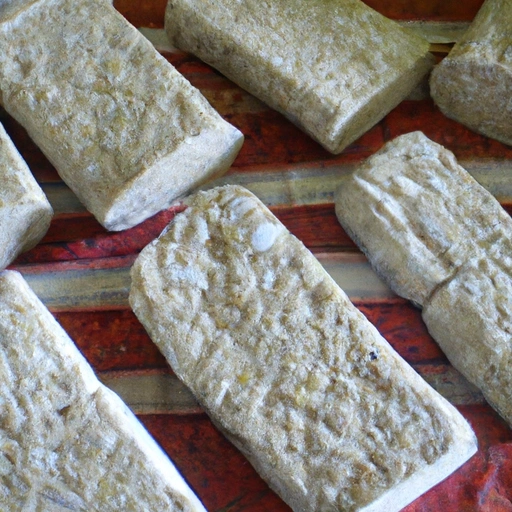Tempeh
Description

Tempeh is a traditional Indonesian soy product that has gained international acclaim for its versatility and nutritional profile. It is a plant-based protein made by fermenting cooked soybeans with a mold, usually of the genus Rhizopus. Tempeh has a firm texture and a nutty, earthy flavor, which makes it an excellent meat substitute in a variety of dishes. It absorbs flavors well, making it a favorite ingredient for chefs and home cooks looking to add a protein boost to their meals.
Common uses
Tempeh is commonly used as a meat alternative in various culinary applications. It can be sliced, marinated, grilled, fried, or crumbled and is often found in sandwiches, stir-fries, salads, and stews. Its robust texture holds up well to cooking, making it a popular choice for veggie burgers and vegan sausages.
Nutritional value
Calories
One serving of tempeh (approximately 100 grams or 3.5 ounces) contains around 195 calories.
Protein
Tempeh is an excellent source of protein, with about 20 grams per 100-gram serving.
Fat
It contains around 11 grams of fat per serving, much of which consists of polyunsaturated and monounsaturated fats.
Carbohydrates
Tempeh is low in carbohydrates, with about 7.6 grams per serving.
Vitamins
Tempeh is rich in B vitamins, particularly B2 (riboflavin) and B3 (niacin).
Minerals
It also contains minerals such as magnesium, phosphorus, iron, and calcium.
Health benefits
Tempeh is renowned for its health benefits, including its ability to improve gut health due to its fermentation process. Being high in protein and fiber while low in carbs makes it ideal for weight management. Its phytoestrogens can aid in balancing hormone levels, and its content of isoflavones has been associated with reduced risk of heart disease and certain cancers.
Potential risks
While tempeh is generally considered safe and healthy, some individuals may have soy allergies and should avoid it. Additionally, because tempeh is a fermented food, it may not be suitable for those with histamine intolerance.
Common recipes
Tempeh can be found in a variety of dishes, including tempeh stir-fry, tempeh tacos, and tempeh reuben sandwiches. It is also a staple in traditional Indonesian recipes such as tempeh goreng and tempeh sambal.
Cooking methods
Tempeh can be steamed, sautéed, baked, or grilled. It can also be marinated to take on a variety of flavors before cooking.
Pairing with other ingredients
Its nutty flavor pairs well with bold seasonings and sauces such as soy sauce, teriyaki, and barbecue. It also complements a variety of vegetables, grains, and legumes.
Summary
Tempeh is a versatile and nutrient-dense food that has transcended its traditional Indonesian roots to become a cherished ingredient in contemporary global cuisine. With its high protein content and numerous health benefits, it is an excellent choice for those following vegetarian and vegan diets, as well as anyone looking to incorporate more plant-based proteins into their meals.